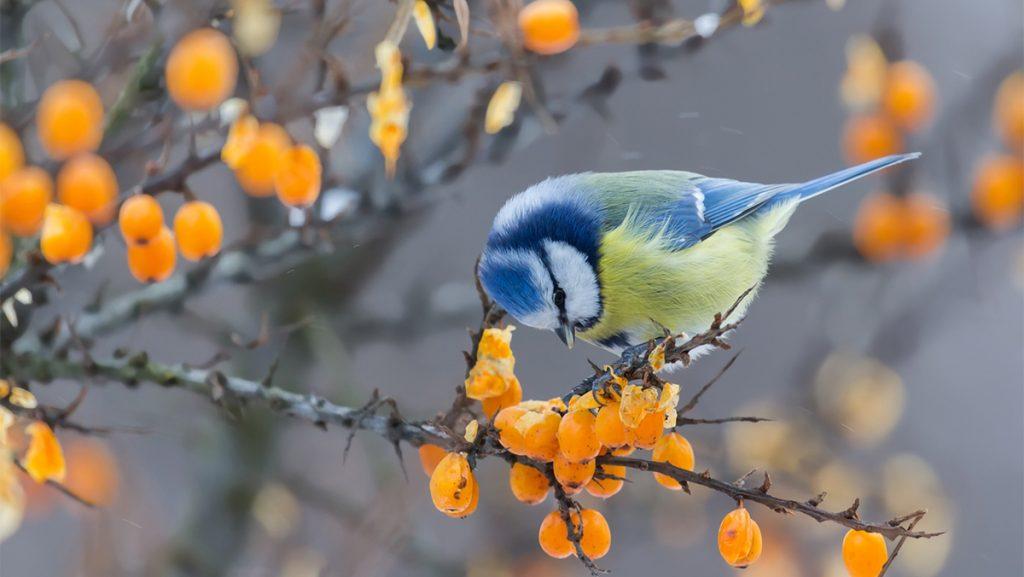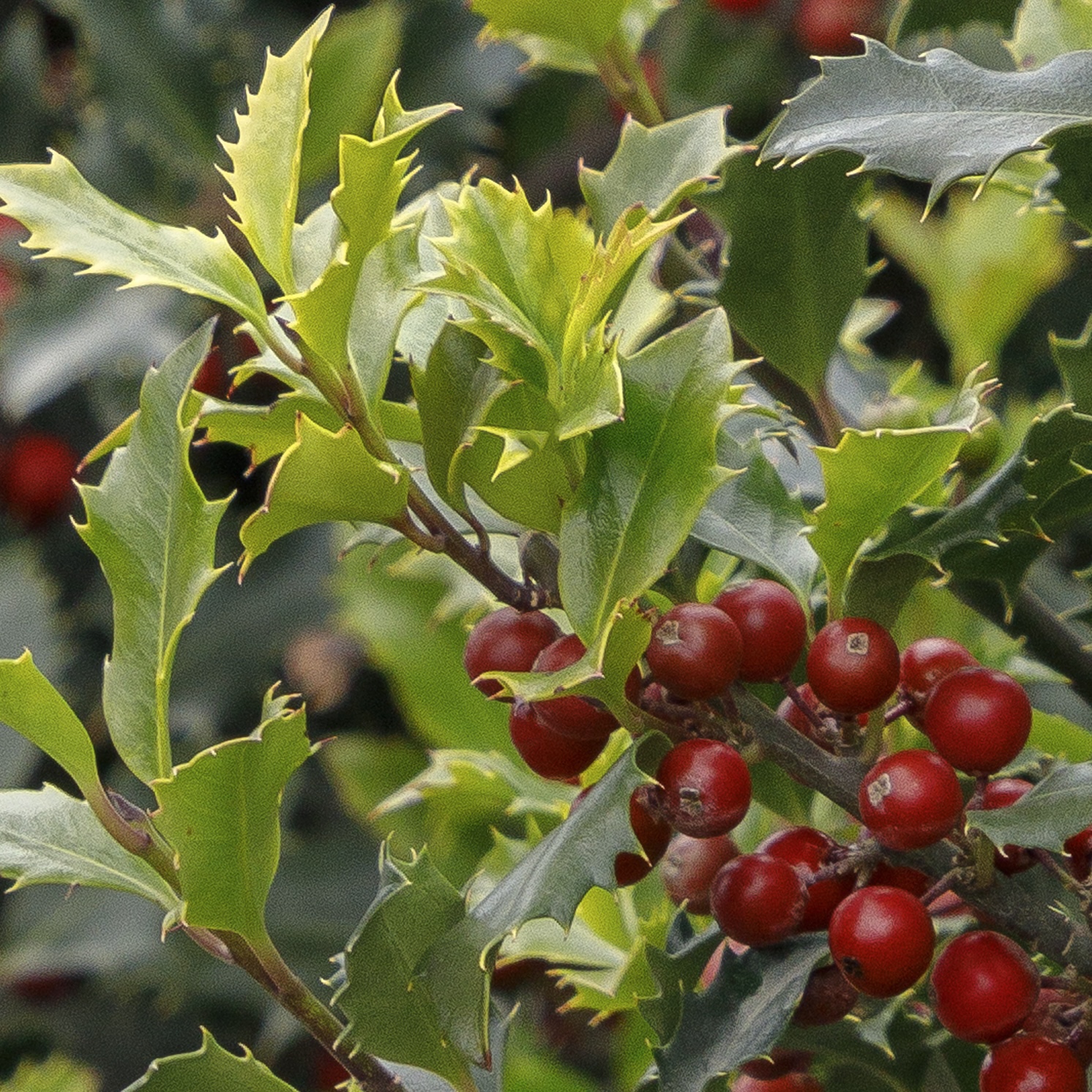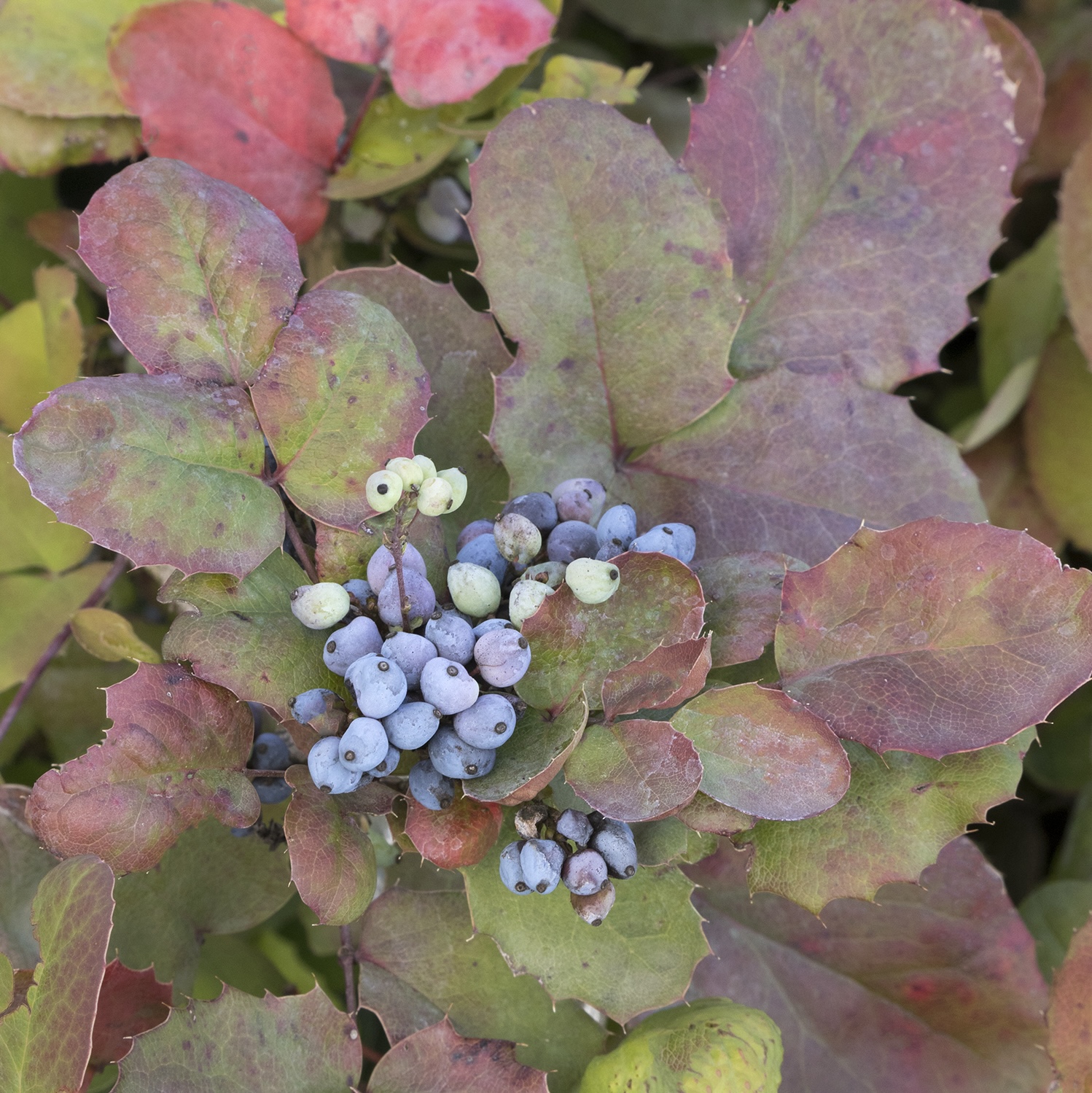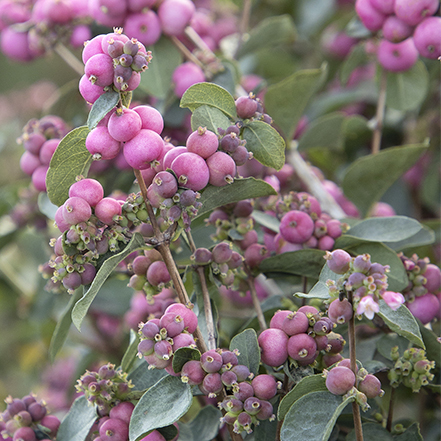Foraging birds need a diet of heavy-duty foods full of sugars and fats on a regular basis. This is so they can thrive over the cold winter months. Planting a winter berry bird buffet full of shrubs with berries keeps birds happy, healthy, and coming back for more. Plus, as an added benefit, those same plants will help to attract pollinating insects when they flower next spring. Here are several options that produce loads of tasty berries which will have birds flocking to your yard.
Berries are full of sugars, fats, and antioxidants with lots of the calories. Birds need this to survive freezing winter nights.
Best Shrubs with Berries for Birds
Magical® Amore Holly
About: A fast-growing, upright female holly that produces an abundance of red berries that are loved by birds. Pair with a male blue holly pollinizer like Blue Prince for a prolific berry set. Partial to full sun. Up to 7' tall, 3' wide. Zones 4-8.
Attracts: Robins, blackbirds, swallows, thrushes, bluebirds, cedar waxwing.
Darkstar® Creeping Oregon Grape
About: A low, spreading evergreen shrub with exceptional purple foliage. Brilliant yellow flowers leave behind showy blue-black fruit clusters. A cultivated selection of a N. American native. Partial to full sun. Up to 2' tall, 4' wide. Zones 5–9.
Attracts: Robins, waxwings, juncos, towhees, sparrows, grouse, pheasants.
Pink Symphony™ Snowberry
About: N. American native whose wintertime leafless stems are blanketed by bright berries birds adore. Partial to full sun. Up to 4' tall and wide. Zones 3–7.
Attracts: Towhees, thrushes, robins, grosbeaks, waxwings, pine siskins, chickadees.
Sparkler® Arrowwood Viburnum
About: Large, upright N. American native produces loads of fatty (26%), blue-black berries in winter. Partial to full sun. Up to 15' tall and wide. Zones 4–9.
Attracts: Robins, bluebirds, thrushes, vireos, kingbirds, juncos, cardinals, warblers.
Virginia Creeper
About: Dense cover and berries high in fat (40+%) makes this N. American native a favorite for wintering birds. Partial to full sun. Needs space, can climb 30-50' or more. Zones 4–9.
Attracts: Northern flicker, brown thrasher, cedar waxwing, eastern bluebird, Swainson’s thrush, robins, warblers.
Brilliant Red Chokeberry
About: N. American native with bitter fruits that only improve after several freeze thaw cycles in the winter. This makes them a later food source. Partial shade to full sun. Up to 8' tall and wide. Zones 4–9.
Attracts: Grouse, cedar waxwings, thrushes, northern flickers, and thrashers.
Yellow Twig Dogwood
About: The bright yellow stems on the younger growth of this multi-stemmed shrub provide striking winter color while berries provide nutrition for birds. Ideal for naturalizing. Partial to full sun. Up to 8' tall, 9' wide in natural form. Zones 2-8.
Attracts: Cardinals, Cedar waxwings, American robins, nuthatches, tufted titmouse, dark-eyed junco, sparrows, bluebirds, warblers, and woodpeckers.
Dynamite® Crape Myrtle
About: Ok, not technically a berry, but we couldn't resist including this stunner that produces seeds that birds adore. The smooth, peeling bark of this large shrub or small tree is an added winter bonus. Full sun. Up to 20' tall, 15' wide. Zones 6-10.
Attracts: Goldfinch, dark-eyed junco, house finch, northern cardinal, and sparrows.
Tips for Attracting Winter Birds

Where possible, choose plants that are native to your region because birds, such as this Cape May Warbler. Recognize them, and thus spend less energy foraging.
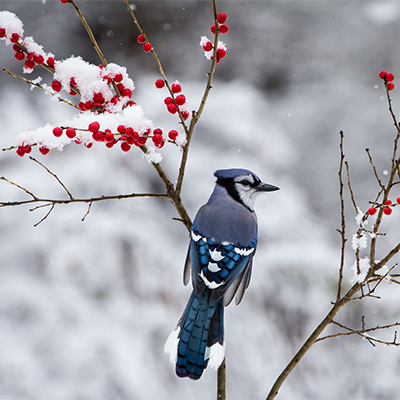
Provide a variety of trees, shrubs, and vines with natural food sources and shelter. This can double the number of bird species that come to your yard in winter.
- The best way to bring birds to your yard this winter is to provide for their three major needs: Abundant, regular food, clean water, and shelter from winds and cold. Bird-friendly landscaping includes plants like conifers and evergreens as well as those that provide food.
- Plant a variety of berry-producing shrubs and vines that provide a variety of fruits at different times. You’ll want something with fruits in the late summer, fall, and early winter.
- Don’t scrape the yard free of fall debris! Birds appreciate organic materials like seedpods, leaf piles, and fruit that fell from trees. Same goes for your post-holiday Christmas tree which makes a fine place to chill.
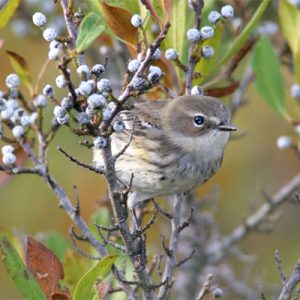
Get More Information About Habitat-Friendly Gardening
- Find our award-winning Backyard Habitat Guide for free here, and sign up for our newsletter to get first access to upcoming digital guides.
- Take a look at the pollinator section of the blog for a variety of stories about pollinator-friendly gardening
- Modern Meadow: A fresh take on pollinator garden design
- What to Plant to Attract Butterflies, Hummingbirds, and Bees
- Ask an Expert: Best Pollinator Plants for the Garden
- Beneficial Insects for a Healthy Garden: A Visual Guide
- Best Early-Spring Flowering Plants to Attract Pollinators
- 10 Early-Blooming, Cold-Hardy Plants for Pollinators
- Late Summer and Fall-Blooming Perennials
- Grow a Pollinator Border
- Sign up for our Grow Beautifully newsletter. You'll get more design inspiration, garden tips, how-tos, and first access to exclusive guides, webinars, and plants.
Image Credits: Many thanks to the following for sharing their spectacular work with us.
Cape May Warbler: G. Dewaghe
Myrtle Warbler: Bill Hubick
Blue bird (lead): iStock Iurii_Au





